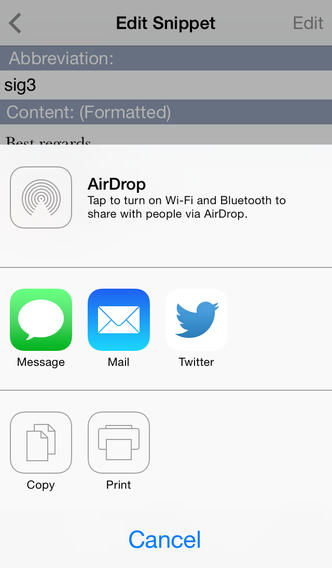

For :), I’ve changed the default ‘smile’ emoji from the ‘smiling face with squinting eyes’, that’s slightly blushing (😊) to the simpler ‘slightly smiling face’ (🙂).llorem to output a bunch of lorem ipsum textĪnother good use that I found for Text Replacement is to override Apple’s default emojis, for example:.ssigp to output my multi-line personal email signature (replacing the p with another letter like f would output my Frontend NE signature).So when it came to dropping TextExpander, I just added the more hefty snippets to my Text Replacement library and I was away! I added things like: The convention I used was either double initial letter or an abbreviation that I knew wouldn’t clash with a real word, so: I didn’t use TextExpander for anything particularly powerful just small conveniences like autocompleting an email address here, or adding an email signature there.Įven then, there weren’t that many snippets on my iOS device – just often-typed words especially those that contained signs and other fiddly punctuation. So I used Text Replacement on my phone and TextExpander on my Mac.

I had tried the TextExpander Custom Keyboard but it didn’t run well on the iPhone 6 I was using at the time, and the colour scheme and goofy TextExpander logo on the keyboard didn’t help. I’ve used Text Replacement on my iPhone for a long time, where TextExpander wasn’t available system-wide. System Preferences → Keyboard → Text (macOS).Settings → General → Keyboard → Text Replacement (iOS).If you’re not sure what Text Replacement is, head to: How? Apple’s built-in Text Replacement feature. I tend not to notice annual subscriptions in the same way I do monthly ones.Īnd with that new found scrutiny, I realised I could get the majority of the functionality I was getting from TextExpander for free. But when they moved to monthly subscription I was out. I happily paid for major version upgrades when they were released, and when they started charging annually I didn’t mind forking out the $18 or so each year.


 0 kommentar(er)
0 kommentar(er)
